What Animal Is The Biggest In The World
Biggest animals in the world
Humans may exist the ones who cracked the code on jail cell phones, written language, and sliced staff of life, but the animal kingdom brings a lot to the table in terms of sheer size and force. Yes, it was a human being who wrote "Romeo and Juliet," equally was the inventor of the vacuum cleaner, but these accomplishments don't mean much to a 12-foot-wide crab or a 300-pound bird. Every bit humans, we can only bow our heads in respect to these massive kings and queens of the animal world.
The animals included on this list all share 1 trait: They are larger than whatsoever other animate being of their kind, which may have a little something to do with an evolutionary trend. In recent years, new research has emerged in support of Cope's rule, which posits that over generations, animals will evolve to get larger. This Stanford study found that while it's non necessarily the case that all animals have become bigger over time, those that were already on the larger side did evolve and branch off to become more diverse—which tin can ultimately prove beneficial in terms of survival.
That being said, there are certainly some ancient creatures whose unfathomable size would have made them an unwelcome guest in the modernistic globe. Take the extinct Titanoboa, for instance: a 3,000-pound, 48-foot-long snake whose remains were discovered in Colombia.
Stacker has done extensive research to create this unique list, which features the largest animals of their kind for certain categories of the animate being kingdom. These categories, including mammal, bird, fish, and beyond, offer an overall look at the living beings that tower over others of their kind.
Read on to larn more nearly the biggest animals in the world.
You may also similar: Deadliest animals in the earth
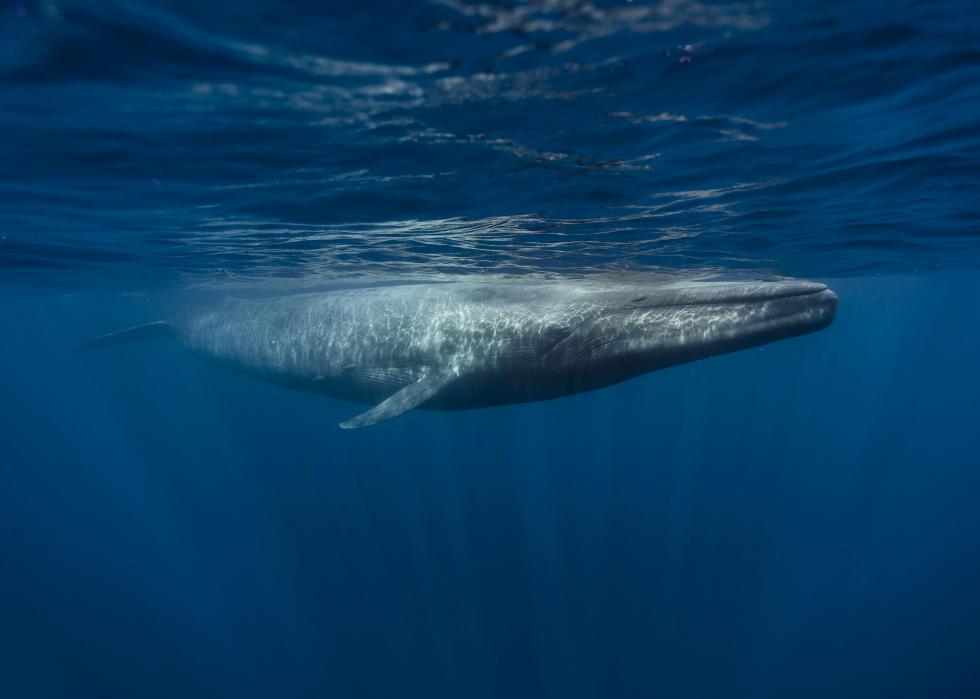
1 / 17
Andrew Sutton // Shutterstock
Mammal: Blue whale
The blue whale is the largest brute on Globe, and maybe the largest ever to have existed, normally ranging between 70 and 90 feet in length (though there are records of some that have exceeded the 100-foot mark). These whales have been found in every ocean across the globe, oftentimes traveling in pairs; areas off the California coast hold the densest population. Unsurprisingly, being that big requires many calories: Blue whales can eat between 2 and iv tons of krill (a shrimp-similar crustacean) a day.
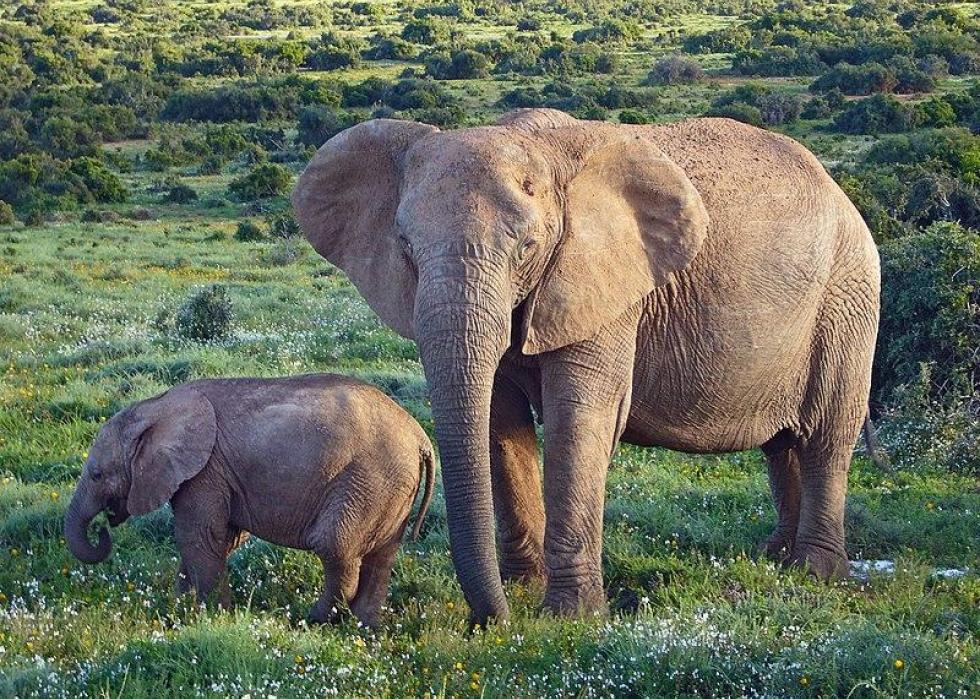
ii / 17
Gorgo // Wikimedia Commons
Land mammal: African bush elephant
The African bush elephant, which can weigh up to 11 tons and reach 13 feet in summit, is characterized past its pronounced tusks, and large caput and ears. The elephant is also notable for its dextrous and sensitive torso, which is made up of over 40,000 muscles and tendons and thereby allows the elephant to handle objects of all sizes with ease. African bush elephants can be found in most African countries, though their survival is at pale due to both poaching concerns and habitat destruction.
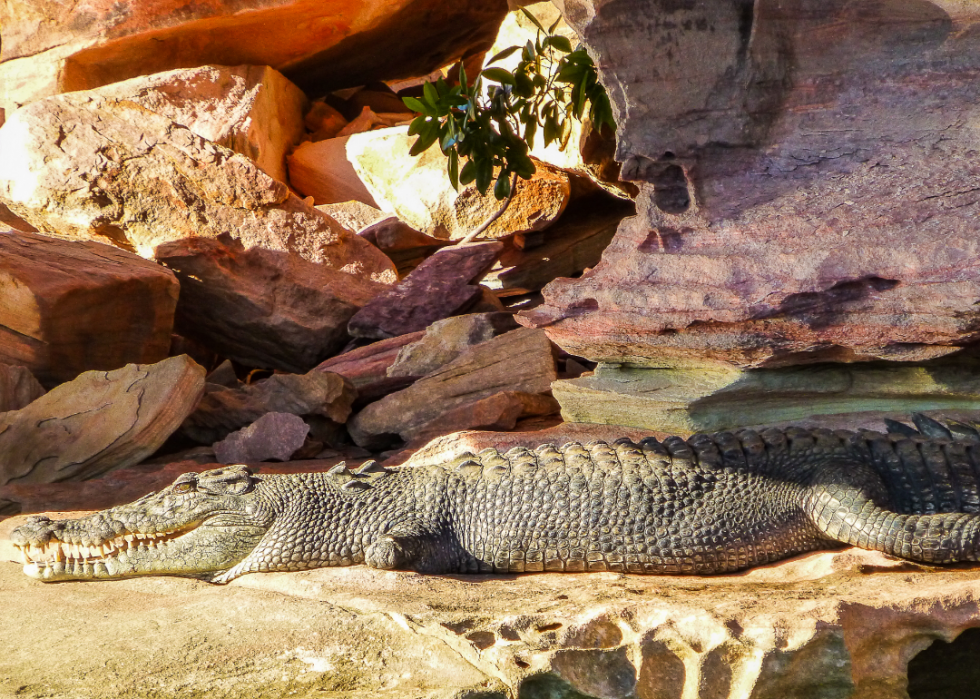
3 / 17
Reptile: Saltwater crocodile
Despite earning the cute-sounding nickname of "saltie," the saltwater crocodile is often regarded as a fearsome creature—due to its 1,000-pound weight, massive jaws, and willingness to eat nearly any creature that wanders into its sights. These crocodiles hunt by waiting simply beneath the surface of a trunk of h2o, then bursting out using their tails in order to take hold of and drown their prey. Saltwater crocodiles can be institute in a variety of regions, ranging from Australia to Southeast Asia.
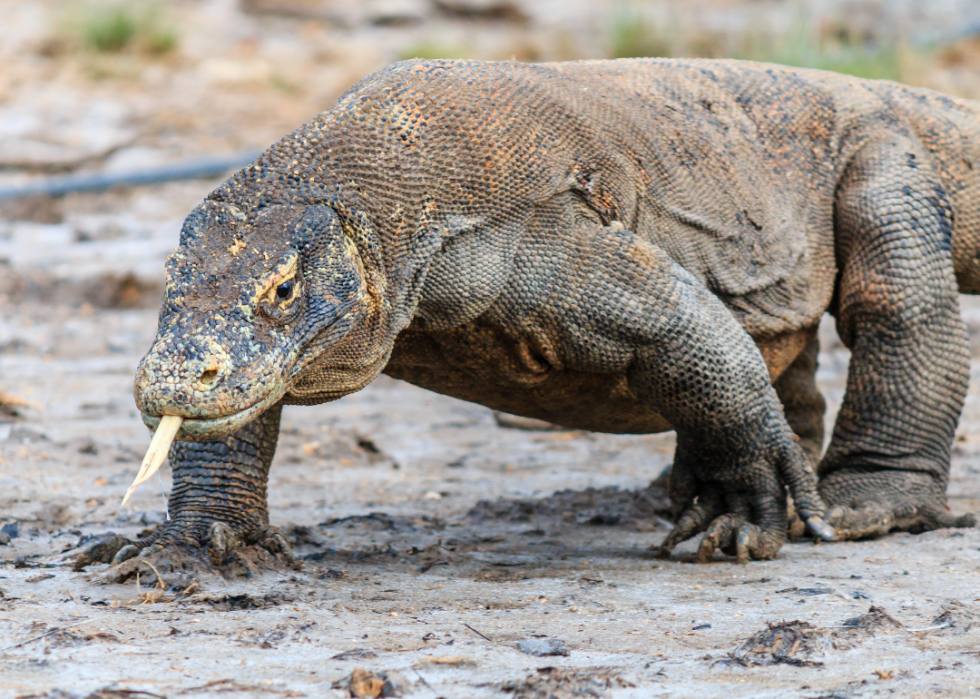
four / 17
Lizard: Komodo dragon
The Komodo dragon'south proper name alone is an indicator of this lizard'southward power and physical characteristics: It's dark and scaly, extremely potent, and uses a long, sparse forked tongue to test the air for signs of nearby casualty. At maturity, a Komodo dragon weighs 154 pounds on average, though the largest confirmed specimen was more than twice that size. Found in Indonesian Islands, the Komodo dragon can both eat 80% of its own body weight in one meal, and empty its tum at volition in society to reduce its weight and escape danger more quickly.
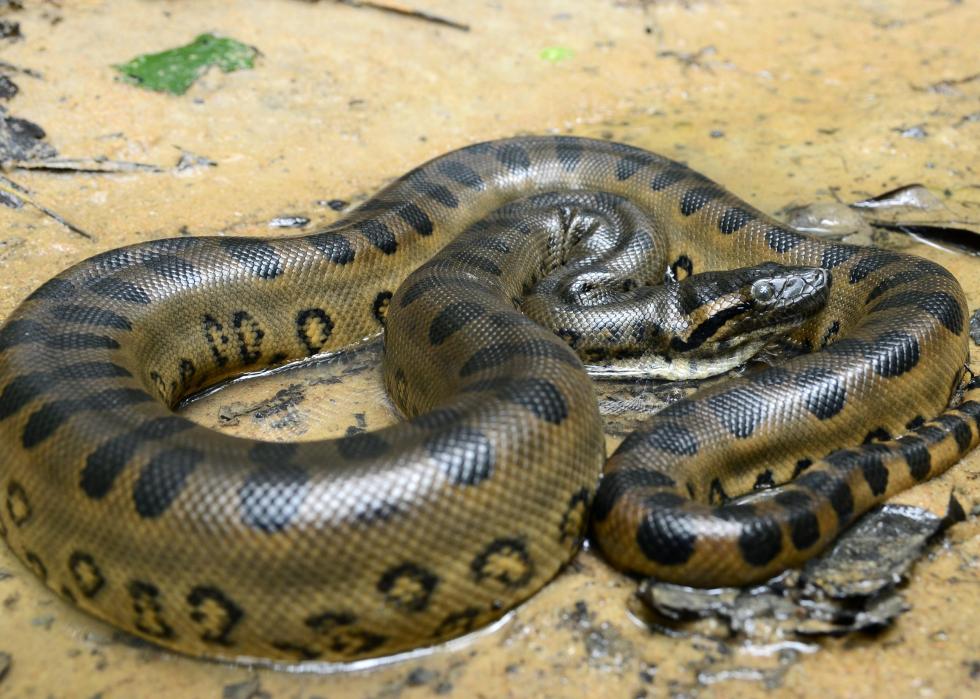
5 / 17
Patrick K. Campbell // Shutterstock
Snake: Giant anaconda
Referenced in pop culture from hip-hop songs to action movies, this jungle-dwelling ophidian can weigh in at around 550 pounds. Found in swampy regions of South America, and usually known as the light-green anaconda, this creature not only possesses the power to swim, but is in fact more agile in the h2o than on land. The mega-ophidian kills its casualty with asphyxiation, and is known to maintain its size past dining on big animals such as pigs and deer.
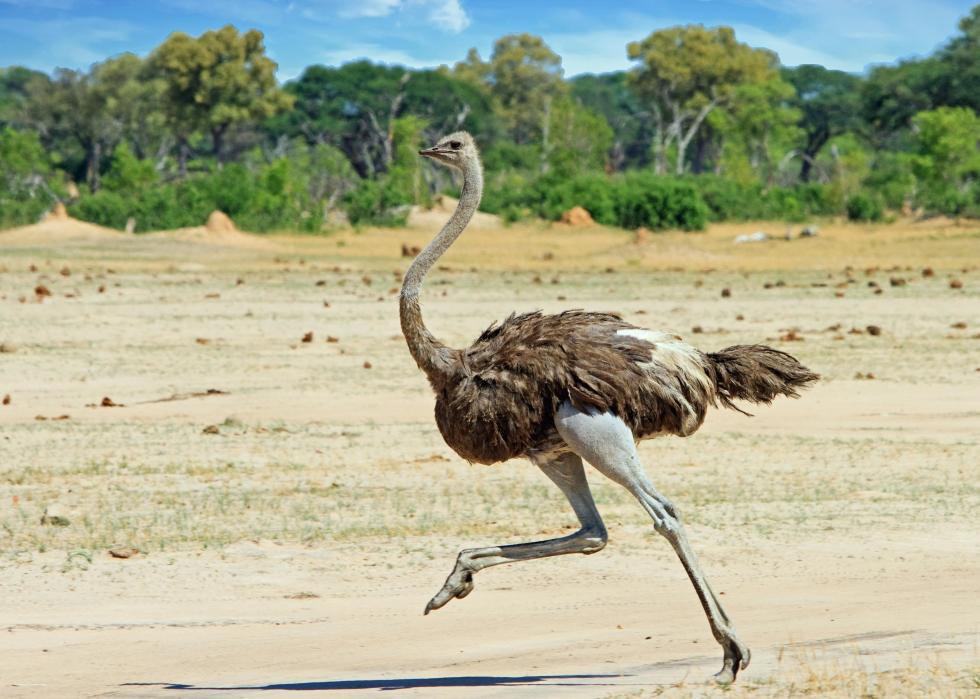
6 / 17
paula french // Shutterstock
Bird: Ostrich
The ostrich may not actually be able to fly, but this African bird tin can run at speeds of 45 miles per hr when threatened. An adult male ostrich may weigh shut to 300 pounds, and can reach a height of 9 feet (about half of which comes from its neck). This concluding surviving member of the genus Struthio dines on things similar berries and grass, and has a progressive approach to the division of household labor: Both females and males take turns guarding and disposed to their eggs after a female person has laid them.
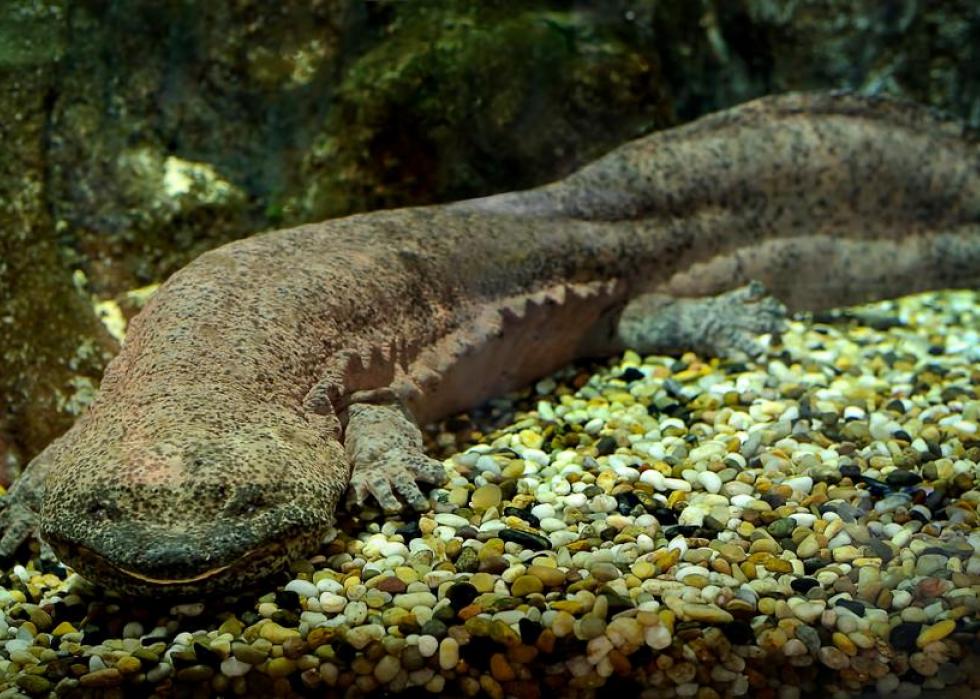
7 / 17
tristan tan // Shutterstock
Amphibian: Chinese giant salamander
Chinese giant salamanders are certainly not new on the block—they belong to the family Cryptobranchidae, ancestors of which split up off from all other types of amphibians during the Jurassic period. This amphibian, whose wide oral cavity sometimes resembles a smile, can abound to be well-nigh 6 feet long, with its tail making up more half of this overall length. The species has long been revered in Prc, only is currently nether threat of extinction due primarily to over-harvesting and lack of habitat protection.
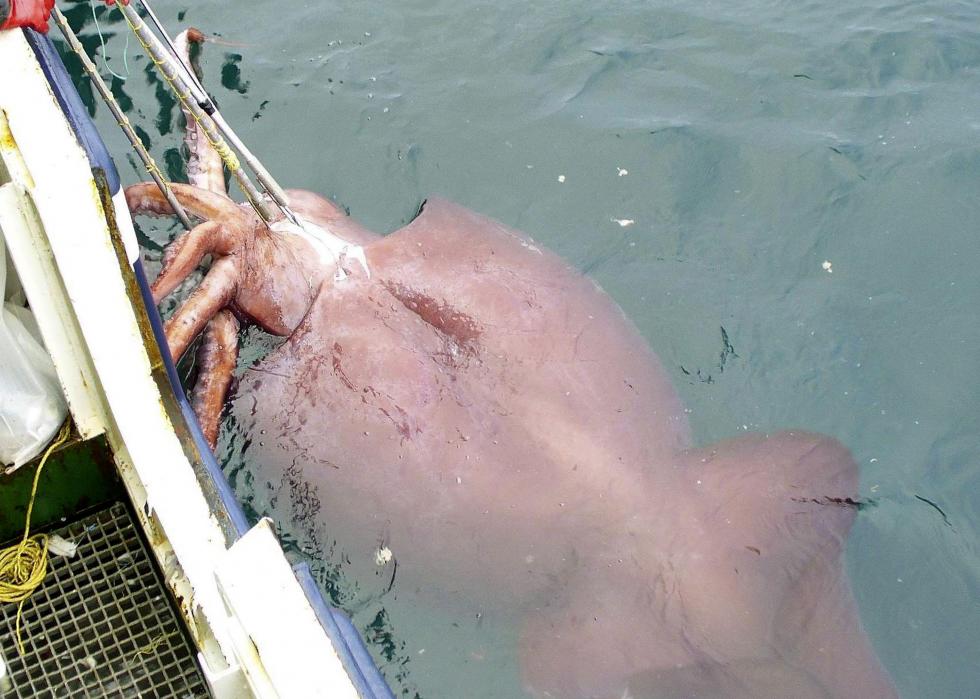
8 / 17
Ministry of Fisheries // Getty Images
Invertebrates: Jumbo squid
Colossal squids aren't only massive, measuring up to 45 anxiety or so in length in machismo—they are also incredibly mysterious, living at extreme h2o depths that make gathering scientific data on them quite difficult. There accept only been a few homo sightings of this cephalopod in all of history: Information technology was first identified in 1925 due to remains discovered inside a whale's stomach; since then, information technology has only been spotted in its entirety a scattering of times. One notable feature of this elusive invertebrate is its extremely large optics—which can exist the size of basketballs.
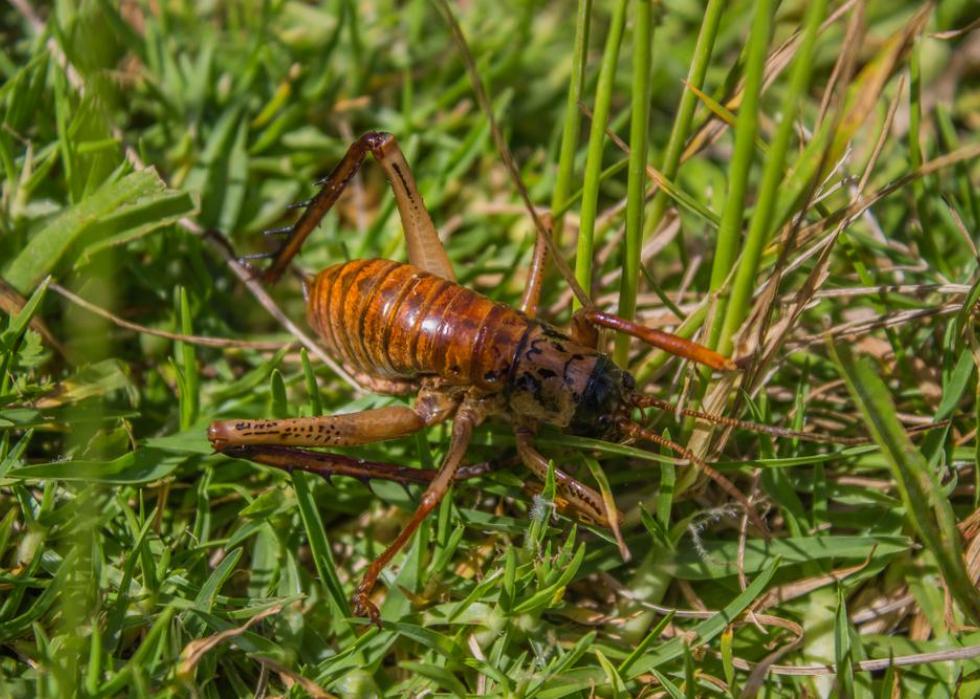
ix / 17
Viktor Hejna // Shutterstock
Insect: Giant weta
This fist-sized issues has a long history: It was able to survive due to the fact that when New Zealand separated from other landmasses millions of years ago, it was left without predatory mammals. Today, the giant weta (of which in that location are 11 species) is the heaviest insect in existence, and mostly lives in copse. The word "weta" is derived from a phrase meaning "god of ugly things" in indigenous New Zealand language Maori, which is non inaccurate when talking virtually this long-horned, spiny-legged creature.
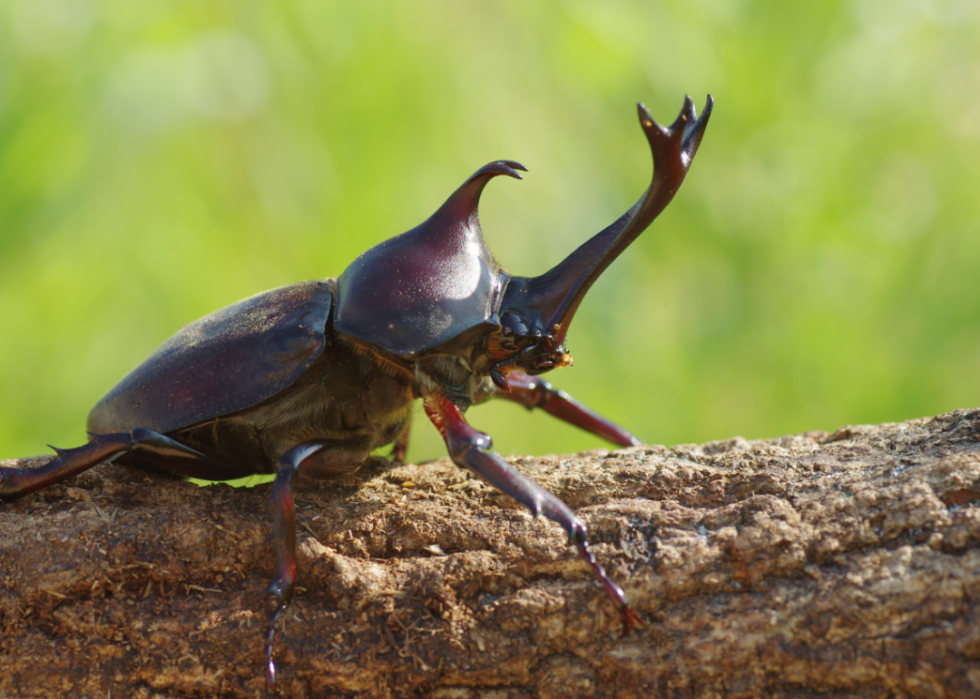
10 / 17
Beetle: Rhinoceros protrude
The Rhinoceros beetle has rightfully earned its common nickname "Hercules beetle," considering that some adults of the species can lift objects up to 850 times their own weight. These black, gray, or green beetles are plant on every continent except Antarctica and tin reach a length of about 6 inches. When threatened, information technology tin produce a abrupt hissing audio that comes from the beetle rubbing its abdomen confronting its wings.

11 / 17
Spider: Goliath bird-eating tarantula
The Goliath bird-eating tarantula's 8 eyes might requite the impression that it has excellent sight, simply about of this spider's ability to "run across" comes from using the pilus on its body to sense nearby vibrations. As the biggest tarantula in the world, it boasts a torso bridge of well-nigh five inches and a leg span of 11 inches. They are almost always solitary, pairing upwardly only when necessary to mate.
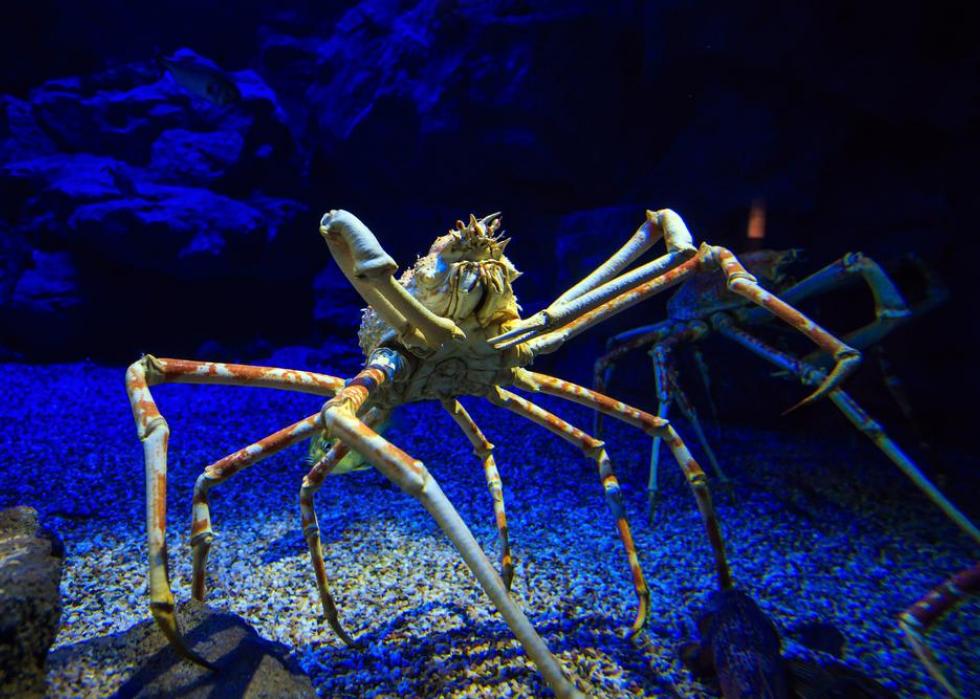
12 / 17
Marine arthropod: Japanese spider crab
It only takes one look at the Japanese spider crab to understand where its proper name comes from: This marine arthropod bears long, spindly legs that can reach an overall span of 12 or 13 feet. Sporting an orange body and white-spotted legs, it lives in the Pacific Ocean near Japan, primarily in waters betwixt 500 and i,000 feet in depth. It is thought to accept a life expectancy of nearly 100 years.
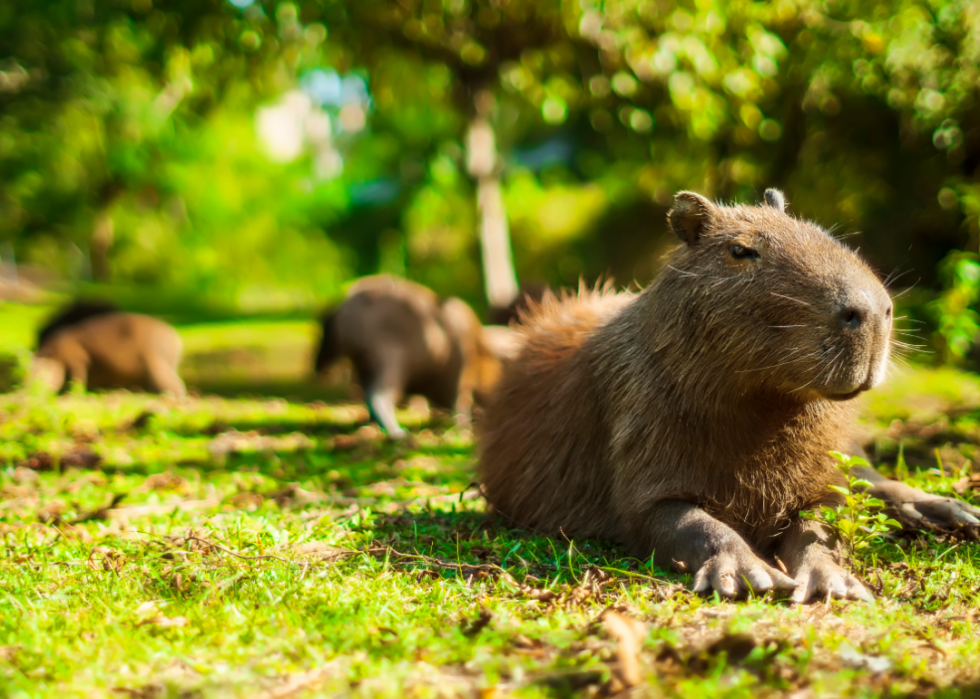
13 / 17
Rodent: Capybara
Rodent haters, look away: The capybara is the largest rodent in the world, standing most 2 anxiety tall at maturity. Sometimes referred to as "capys," they are native to Southward America; they tend to live on riverbanks and so that they tin feast on water plants and gainsay their naturally dry out skin with daily swims. These hefty rodents carry shaggy brown pilus and webbed feet, and are notoriously content to serve as another animate being's chaise lounge.
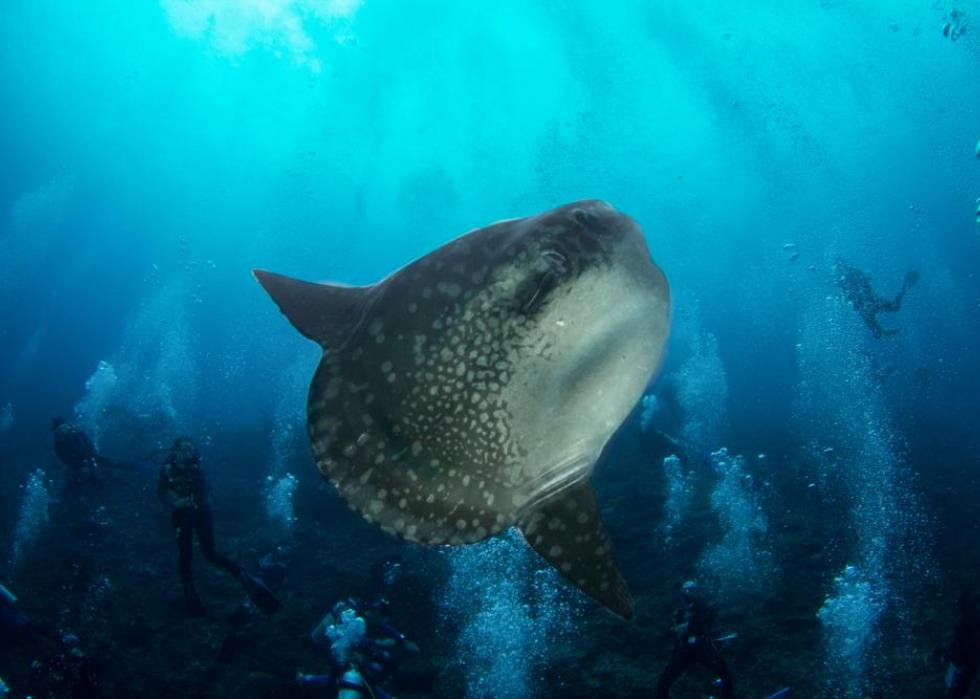
14 / 17
Bony fish: Sunfish
The sunfish (also known equally the mola, Latin for "millstone") can abound to counterbalance a whopping 2.v tons and span 10 feet horizontally. Their large dorsal fin might scare swimmers at showtime, equally information technology looks quite like to that of a shark, but in fact the sunfish is harmless to (and unafraid of) humans. Silvery and rough skinned, these aquatic creatures can be establish in tropical oceans across the globe—oftentimes soaking up sunlight virtually the water's surface.
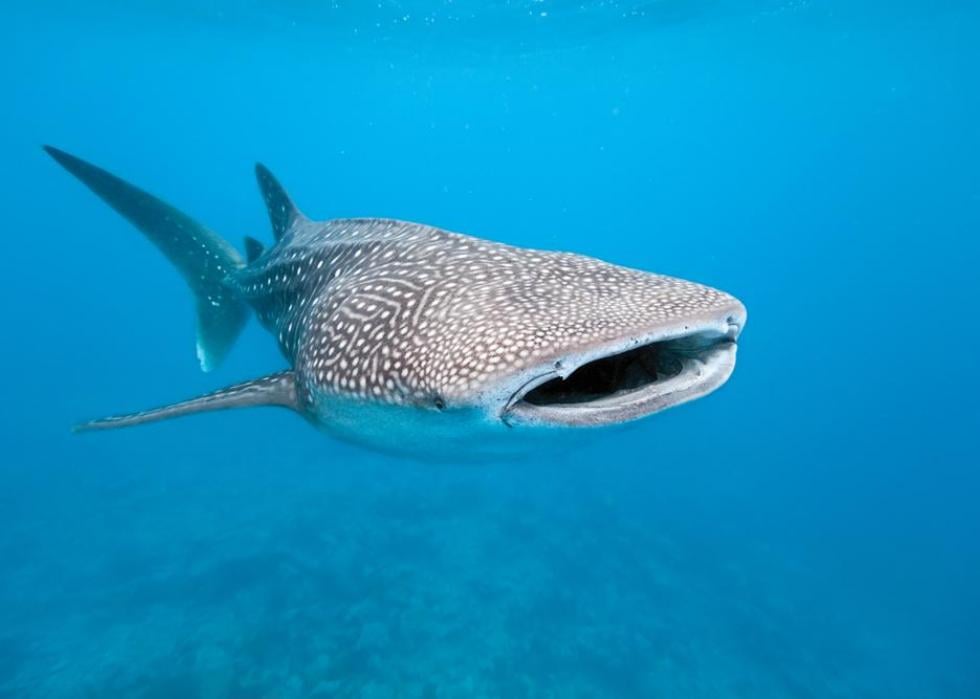
15 / 17
Krzysztof Odziomek // Shutterstock
Fish: Whale shark
The whale shark may be the largest shark in the globe (it can attain the size of a schoolhouse bus), only it easily falls into the category of "gentle giant." Whale sharks are filter feeders: Rather than seeking out and attacking other body of water creatures for sustenance, they but swim along with their large mouths hanging open, sucking up all the plankton they pass. They can exist found in many tropical oceans and are distinguishable from other kinds of sharks due to their uniquely white-spotted bodies.
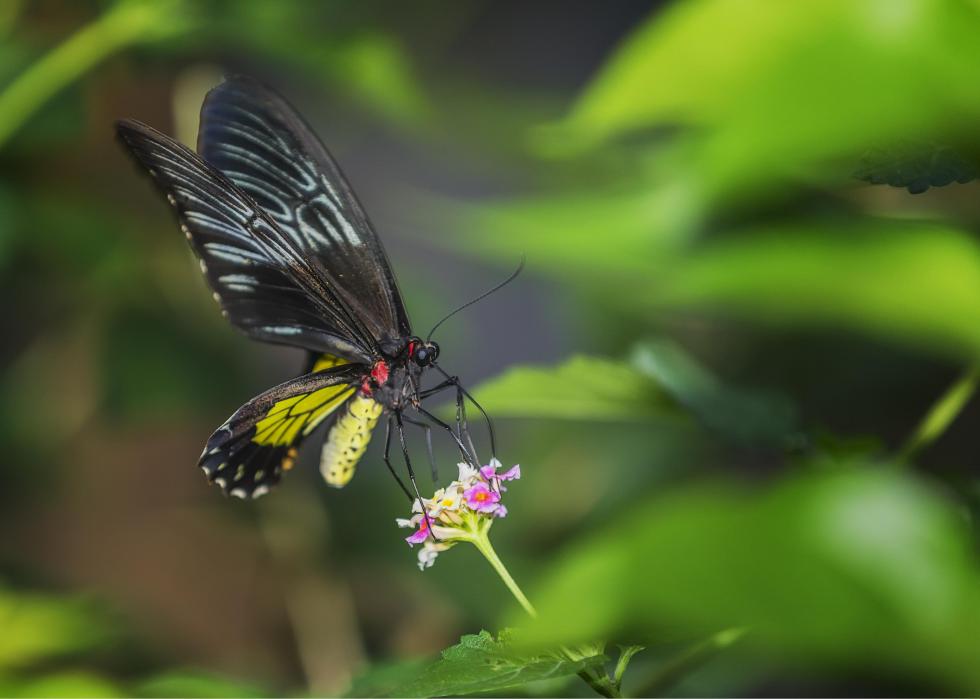
16 / 17
Butterfly: Queen Alexandra'south birdwing
With a wingspan of virtually ten inches, Queen Alexandra's birdwing—which is found only in New Republic of guinea—is the largest butterfly in being. That'southward not the merely place where this butterfly beats out others of its kind: It takes iv months for information technology to become a total adult, and then information technology lives for three months across that (many other butterflies only live for about one calendar month at nearly). While the females are mostly brown, the males of this species typically display neon green and aquamarine wings.
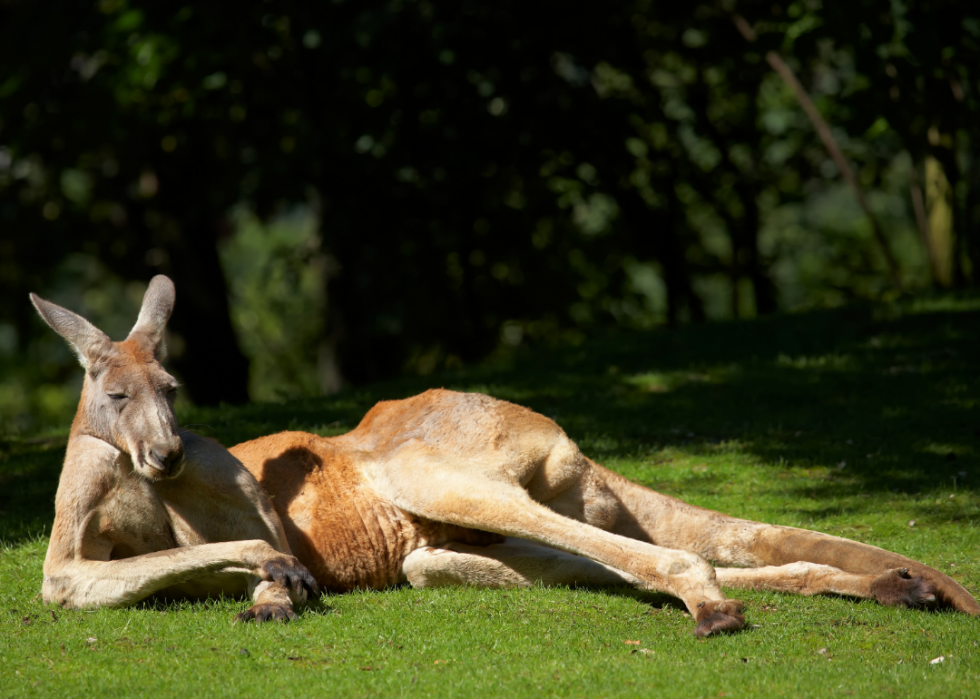
17 / 17
Marsupial: Blood-red kangaroo
The pocket-sized groups into which reddish kangaroos ofttimes congregate are referred to every bit "mobs," although they haven't been known thus far to participate in organized crime. They can weigh about 200 pounds and have a lifespan of up to 23 years; their powerful legs give them the ability to move at a speed of 35 miles per hour and bound six feet loftier. In spite of its large adult size, the red kangaroo is smaller than a carmine at birth and spends an additional two months inside its mother's pouch before branching out into Australia'due south deserts and grasslands.
Yous may likewise be interested in: 1 1000000 species are facing annihilation—inside Earth'south sixth mass extinction effect
Trending At present
© Stacker 2022. All rights reserved.
Source: https://stacker.com/stories/2613/biggest-animals-world
Posted by: mcgaugheyaguied1981.blogspot.com

0 Response to "What Animal Is The Biggest In The World"
Post a Comment